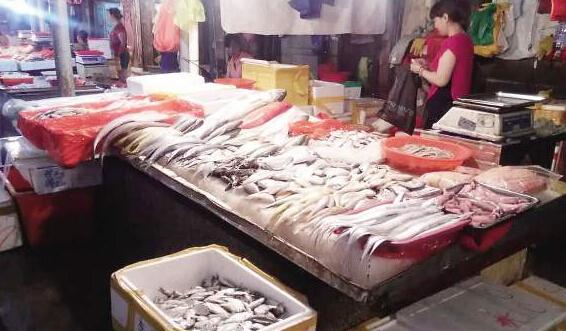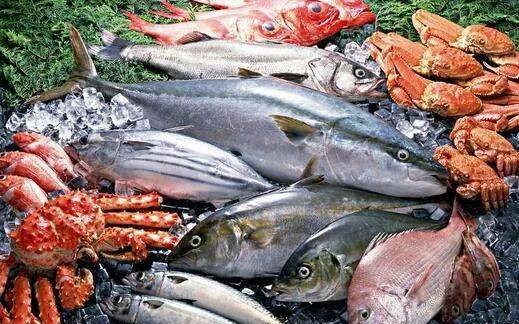May, fishing ban pressures prices; opens opportunities in China
[ 2018.05.25 ]
Consumers across China are bracing themselves for higher seafood prices come 1 May, the beginning of the May holiday. But the holiday now also coincides with the start of the increasingly lengthier fishing ban which China is bringing in on various local seas. The longer ban will in most cases run through September and is aimed at giving overfished waters of the East China Sea and the Chinese part of the South China Sea a chance to replenish their catches.

China has spotlighted excessive antibiotics use as a major problem in a recent national campaign on “Quality and Safety of Seafood.” The past week has seen inspections of seafood markets and other propaganda events staged for cameras across the country to reassure consumers that local seafood is safe to eat. At a national conference in mid-April, Zhang Xianliang, the country’s top fisheries management official, spoke of the need to end the “contradiction” between growing demand for seafood and the pressure on China’s marine environments.
The timing of the quality and safety week is surely not coincidental. However, while China’s government is clearly trying to reassure its citizens that farmed seafood is safe to eat, Zhang Xianliang’s statement suggests more imports.
The ban and the May holiday will together drive a 20-percent rise in average seafood prices for key local consumption species pomfret, squid, and ribbonfish, according to the city television news station run by the government of Xiamen, which is a major production and consumption point for seafood. Authorities in Xiamen have reassured locals that there won’t be a shortage of seafood – that imports and locally farmed produce will make up for any shortfall. That authorities are going to such lengths to reassure local consumers suggests an obvious opportunity for seafood importers.

Seafood Source calls to consumers in different cities around China revealed that seafood prices are up across the board. Prices for wild yellow croaker have doubled in some cases on the eastern seaboard. Seafood shoppers in Wenzhou are being quoted up to CNY 500 (USD 78, EUR 65) per 500 grams of large size wild yellow croaker, with the farmed variety going for up to CNY 300 (USD 47, EUR 39). Pomfret is trading at CNY 75 (USD 11, EUR 9.7) per 500 grams, up 20 percent month-on-month, in Yangzhou but this is expected to reach CNY 100 (USD 15.7, EUR 13) per 500 grams by May. Seawater crabs are selling at CNY 90 (USD 14, EUR 11) per 500 grams in Fuzhou, and Mantis shrimp are trading at CNY 100 (USD 15.7, EUR 13) per 500 grams in that city, up 30 percent on January prices.
China trending seafood fads are also contributing to shortages; “mian yu” (Miichthys miiuy), also known as miiuy croaker, has become prized in China for its claimed health benefits for women. Prices have soared due to a local shortage of the fish, which is now also being sought abroad.
Given China’s shortage of seafood and resulting price hikes, there are clear opportunities for exporters of replacement species. However, imported substitutions don’t always work out – Chinese consumers are known to complain that ribbonfish from the Indian Ocean has a coarser flesh compared to fish of the same name taken from local waters.
There’s a wider regional impact in all of this. Supply from the Indian Ocean which had in many cases gone to Dubai and the Middle East is instead finding its way to China. China’s fishing companies have also been worried by a tightening of U.S. screening of fish to enforce regulations on importing illegal seafood. That means that Chinese catches of abalone, sea cucumber, tuna, and other species will be directed to the domestic market.
For China, it makes economic as well as ecological sense to import seafood. According to official records, Chinese vessels caught 13.2 million metric tons of seafood resources in coastal waters in 2016. The country’s Agriculture Ministry has stated the sustainable level would be eight to nine million metric tons.

Irregardless, subsidies paid to fishermen rose from CNY 3.1 billion (USD 489 million, EUR 404 million) in 2006 to CNY 38.1 billion (USD 6 billion, EUR 4 billion) in 2013 – a massive subsidy to the seafood fished by domestic boats doing untold harm to the nation’s stocks and stocks in neighbouring countries’ waters. That might have been spent sourcing seafood from elsewhere – like, for example, imports.
China will take more seafood from abroad because it must. This creates an opportunity for exporters.



